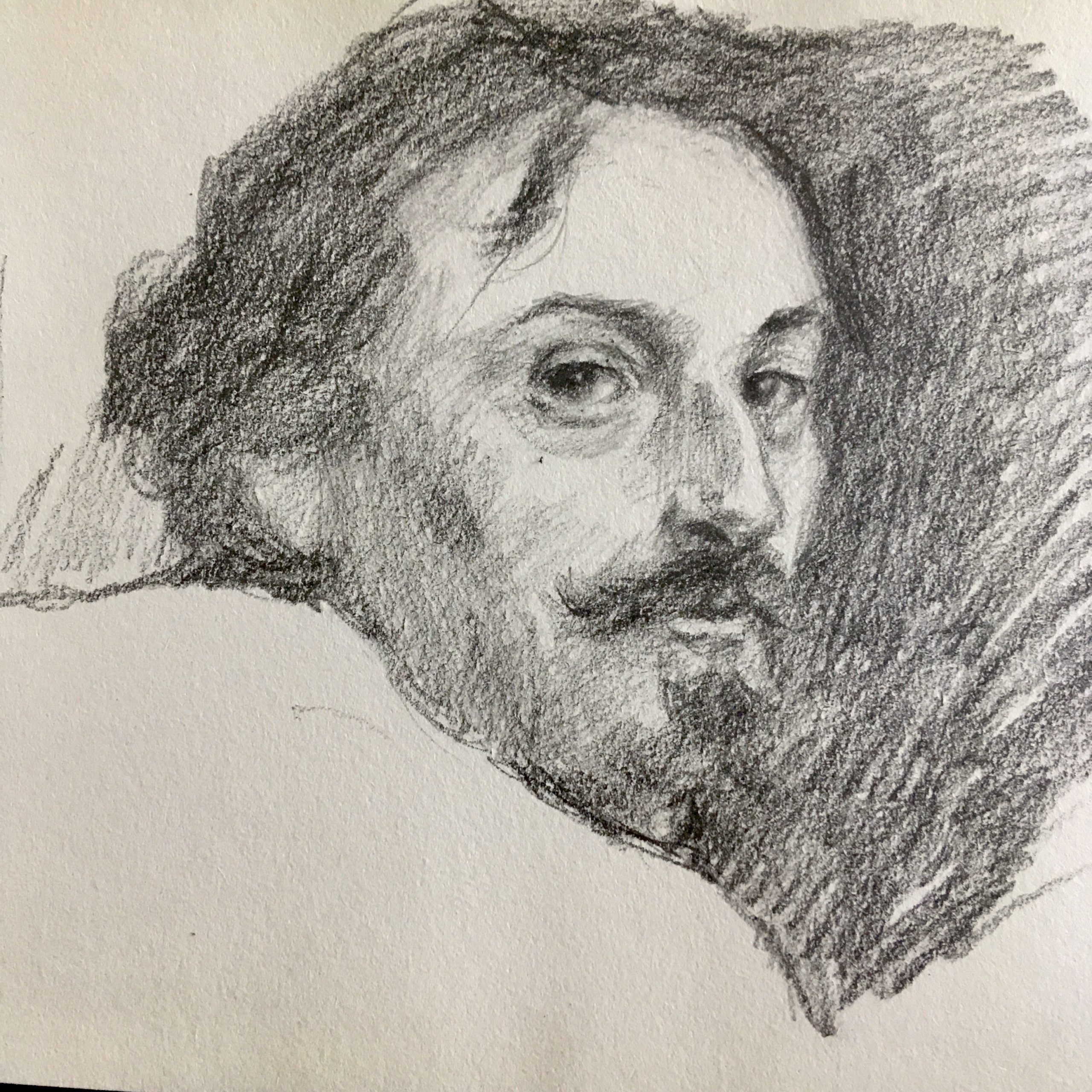I am writing down how to ‘paint safely using oil colors’ to invite new artists to try using oil colors instead of other alternatives in the market. There is much to learn, so I will publish related content in several, bite-size, posts.
Painting with oil colors comes with a heavy cost to some artists. Some oil colors contain toxic chemicals—such mercury, cadmiums, cobalt, lead–and oil color mediums to change oil colors or to clean your brushes can be extremely harmful. Despite the dangers of these chemicals—let me assure you—that oil painting is a safe sport.
The absolute Eco-friendly Oil Painting option is to limit your colors to use natural earth based colors, and eliminate the use of solvents. I hope I can lead up to that in the coming series, so stay tuned!
The dangers from the toxic materials weren’t well known until recent decades, so it’s not surprising that some of the best known ‘dead’ artists had been careless: Carravaggio often used his painting palette as a plate, Van Gogh apparently drank paint thinners, and many artists painted with bare hands, exposing them to chemical poisoning. Perhaps it was the result of chemical poisoning that made Carravaggio go off killing people, and changed how Van Gogh see colors with higher shades of yellow.
So why use oil colors? Well, because many oil colors are “organic” and safer than newer, heavily advertised artist painting materials. What do you think will be more dangerous: eating oil colors made from earthly materials vs. ingesting Acrylic paint? But the major reason to paint with oil colors is the quality of the end product that is more vibrant and closer to living things.
Here are 3 main practices that I have experimented to paint safely:
- Make use of non-toxic colors
- Stop or Limit the use of paint thinners
- Make use of Acrylic Paints for underpainting
I will discuss above practices in upcoming posts. Let me end today’s posts by inviting you to read a post from August 2020 and recommending you additional two colors to start your oil painting journey. Once you have read my two posts, you will be armed with four colors for portrait painting: Ivory Black, Red*, Yellow Ochre, and Titanium White–This is a safer alternative to Zorn Palette, named after Anders Zorn.
RED
*Anders Zorn used Vermillion (PR106), which is an opaque reddish orange pigment that is super toxic if ingested. Many artists now use Cadmium Reds, which is also toxic. Here are some additional options that I have experimented.
- Bright Red (PR254-Pyrrole Red; Lightfastness: Excellent) – Excellence choice from organic, red pigment options.
- Scarlet Lake (PR255-Coral Red; Lightfastness: Excellent) – yellowish red pigment – Not completely safe, but better than Vermillion.
- Winsor Red (PR255-Coral Red, PR254-Pyrrole Red; Lightfastness: Very Good) – PR255 as a yellowish red pigment. PR254-Pyrrole Red, used originally developed to replace carmine and naphthol reds, another possible replacement color for Vermillion. Again, Winsor Red is also not completely safe, but better than Vermillion.
Yellow
- Yellow Ochre (PY42-Yellow Ochre; Lightfastness: Excellent) – One of the oldest and safest pigment of all times, allegedly enjoyed even by cavemen. Some companies also use PY43, but I prefer Michael Harding.
White
- Titanium White without Zinc – (Williamsburg: PW6-Titanium White) – This pigment is considered completely non-toxic. Titanium became the most commonly used pigment since 1940s. Be mindful that this Winsor Newton Titanium White contains Zinc White, which has been known to be problematic in the recent years.
Black
- Ivory Black (PBk9-Ivory Black: Lightfastness: Excellent) – Ivory Black is a misleading name since it’s no longer made using Ivory. The ones that are in the market is made from Animal Bones, and is referred to as Bone Black.
